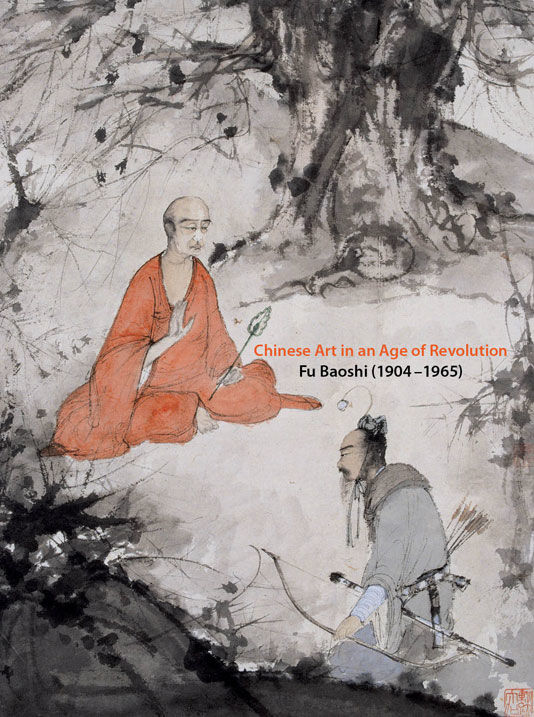I was more than just a little intrigued: “Was I promenading through a Greco-Roman gallery of marble masterpieces or perusing an ancient Chinese art studio? At the Klein Sun Gallery in the heart of New York’s Chelsea Art District, I was introduced for the first time to the flexible paper sculptures of Chinese artist Li Hongbo who utilized ancient Chinese innovations to recreate famous Western art forms. According to the press release from the Klein Sun Gallery that advertised Mr. Hongbo’s first solo U.S. exhibition from January 9 through March 22, 2014 called Tools of Study, “Li Hongbo invites viewers to experience paper and sculpture in a revolutionary and insightful new way.” I might say, If ever I wanted to touch an art exhibit, this would have been it!


Along with other art students from Cleveland State, Mr. McLeod, and Amy Fowler, I visited the Klein Sun Gallery during Spring Break of this year. It is not surprising that this gallery would host Li Hongbo’s U.S. premier. The Klein Sun Gallery was founded by Eli Klein in 2007 and specializes in Chinese contemporary art. Their aim is to bring the “vision” of Chinese artists to the global community. This is so compatible with Li Hongbo’s philosophy of art. Some of the replicas that the artist has made are of Athena, Michelangelo and Michelangelo’s David, Russian writer Maxim Gorky, and simply “A Roman Youth.” Mr. Hongbo explained that his philosophy concerns the “fixed understanding” that people have “of what a human is. So when you transform a person, people will reconsider the nature of objects and the motivation behind the creation.” Furthermore, the artist explains: “I have given myself a rule that my work will not include religious or political themes. I have no interest in participating in typical political symbolism and brash social satire.”


Li Hongbo was born in 1974 in Jilin, China. He lives and works in Beijing, China. He holds Masters degrees in both folk and experimental art. He has worked as a book publisher, editor, and as an expert in ancient and rare books. He has spent six years compiling a book collection of more than 1,000 years of Buddhist art. He was the son of Chinese farmers, and as a boy was always intrigued by paper, which had been invented by the ancient Chinese. Chinese paper toys and lanterns truly fascinated him. Once, when the artist took apart a ‘honeysuckle’ designed party festoon or “party gourd,” he envisioned the unlimited, dynamic intricacies of paper. Then, when the sculptor was in art school, he was required to recreate the world’s masterpieces in detail. In his Klein Sun Gallery Expo he references the generic tools of art students, but the identity of man, all while giving a literal “twist” to his love of paper and the art of detail. Eli Klein calls him “the perfect paper storm.”
Each sculpted bust is made of 7,000 to 8,000 sheets of paper and weighs around 20 or 30 pounds. For the Tools of Study exhibition, he used white paper to appear as marble, pasted narrow strips together with glue into a block structure to a desired height, then cut, chiseled, and sanded each block into a sculpture that surprisingly expands like an accordion or a “slinky.” For some previous exhibitions, such as his first ever solo exhibition in Hong Kong entitled Self and for All Our Relations in Sydney, Australia, he used brown paper and paints to resemble wood. Also, in a group exhibition of twenty Chinese artists entitled Hot Pot in Brattleboro, Vermont, Mr. Hongbo’s brown “Cultured Man” weighed 150 pounds, was wrapped like a mummy, and was transported in a sarcophagus. How I would have loved to have attended the exhibition in Sydney! Li Hongbo actually crafted smaller statues so that visitors could literally touch the exhibits, stretch the paper, and return the statues to their original poses after “playing” with them.


At this time, every sculpture in the Tools exhibition has been sold, ranging in price from $10,000 to $48,000. Currently, museum curators are handling personal orders for Li Hongbo that start at $60,000. This fall, Hongbo’s work is scheduled to be shown at the Dennos Museum in Michigan.
https://www.youtube.com/watch?v=gttdbqX4SWA

BIBLIOGRAPHY
www.kleinsungallery.com
Batalas, Betty. “Interview with Li Hongbo.” Down Town Cabana.
(2014): www. dtcabana.com
Benliyan, Anush. “Mind-Bending Paper Sculptures from Li Hongbo.”
Robb Report Home Style. 17 March 2014. Web. 30 March 2014.
Fleming, Olivia. “Now That’s a Stretch of the Imagination.” Mail
Online. 6 Feb. 2014. Web. 30 March 2014.
Jian, Jimmy and Maxim Duncan. “Li Hongbo, the artist with a
Thousand layers.” The Star Online. 11 Feb. 2014. Web. 30
March 2014.
Yuan, Elizabeth. “Reshaping the Meaning of Sculpture.” The Wall
Street Journal On the Web. 20 Jan. 2014. Web. 29 March 2014.


